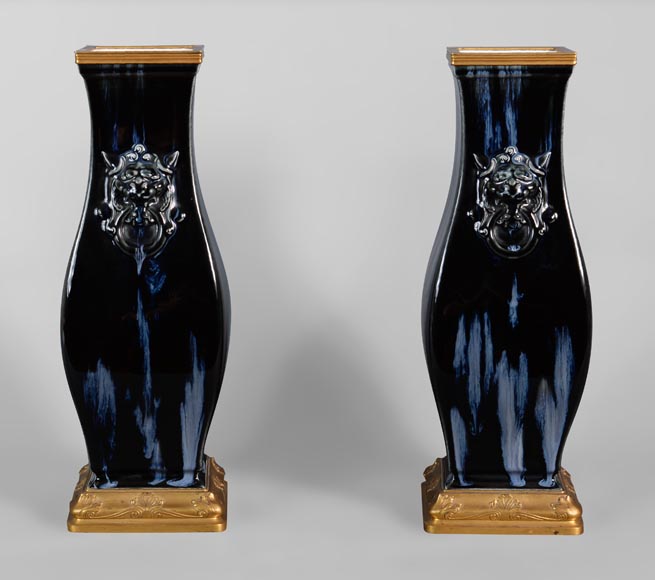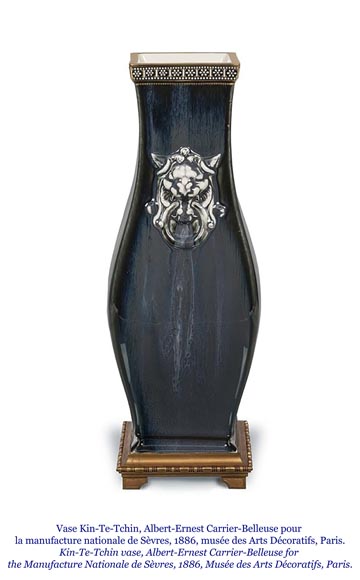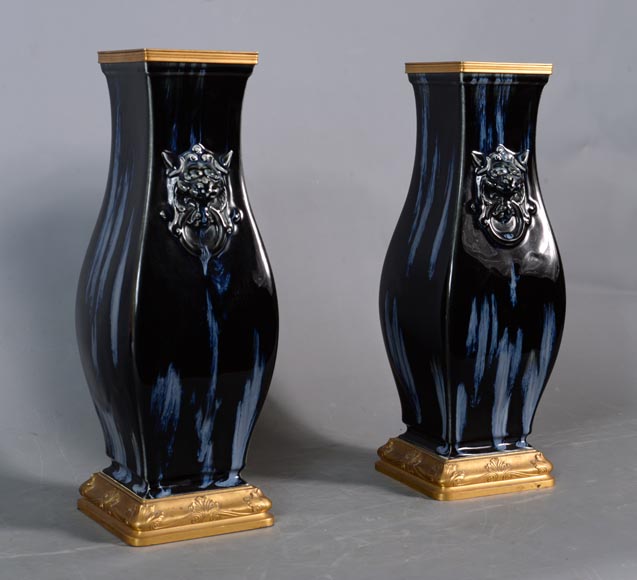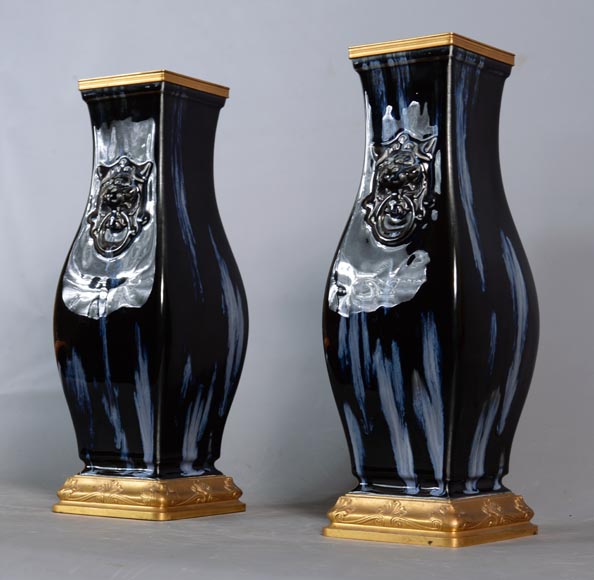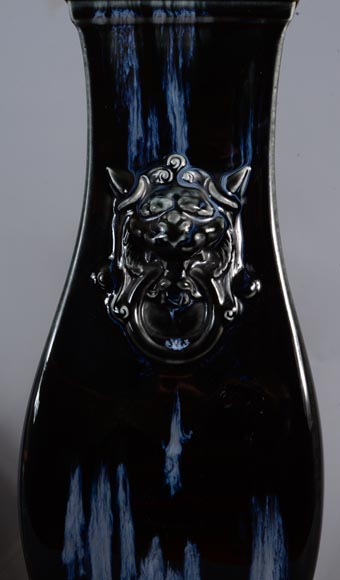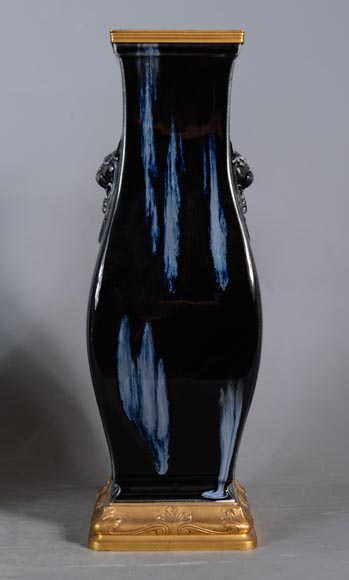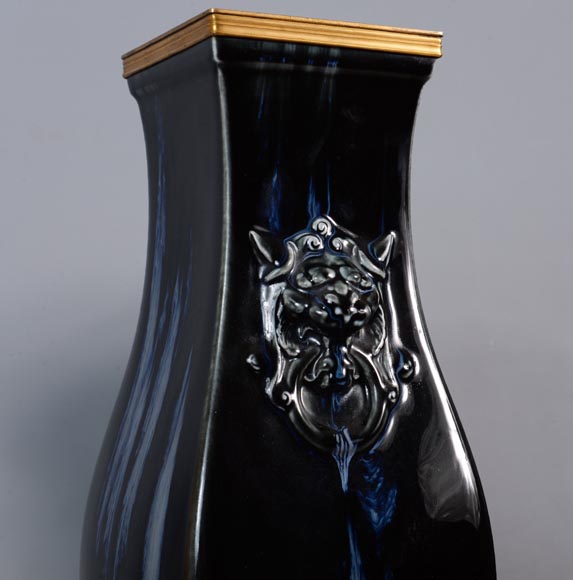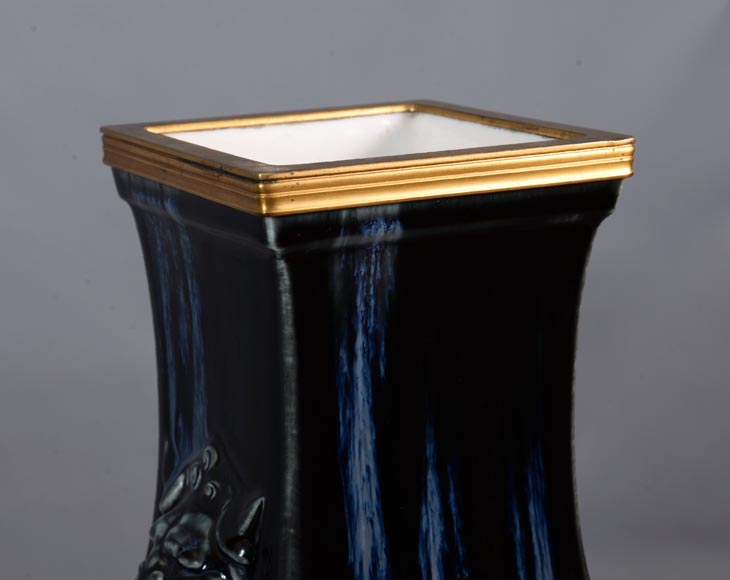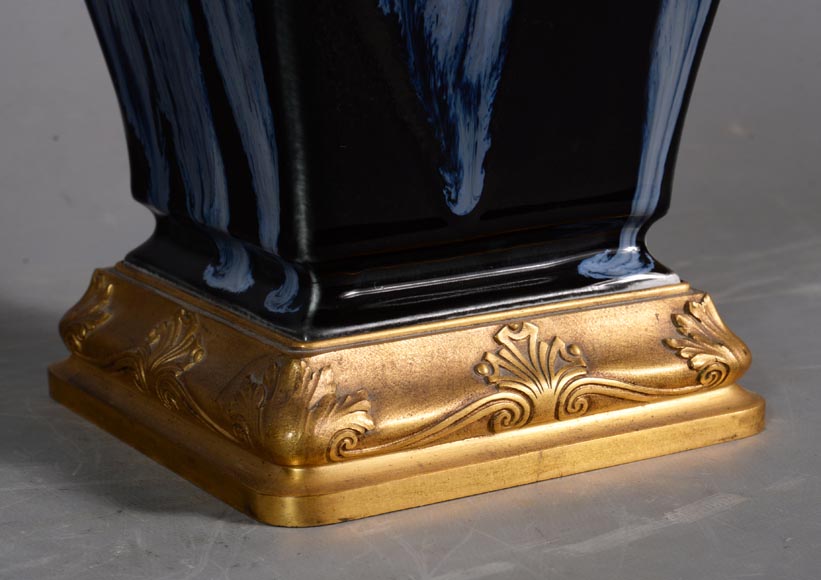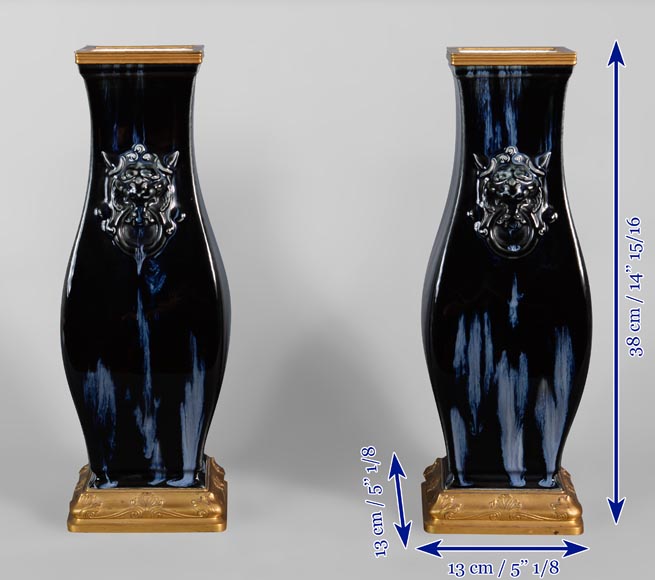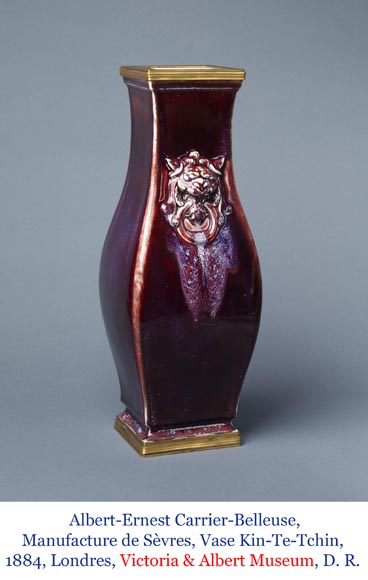Style Japonism, Chinoiserie / Ref.11952
Albert-Ernest CARRIER-BELLEUSE (model by), SÈVRES Manufacture, Kin-Te-Tchin vase, 1884
Dimensions
Width 5'' ⅛ 13cm
Height 15'' 38cm
Depth: 5'' ⅛ 13cm
Origin:
France, 19th century
Status:
Good condition
This pair of porcelain vases with gilt bronze mounts was created by Albert-Ernest Carrier-Belleuse in 1884. At the time, the artist was the director of art at the Sèvres Manufacture, a position he held from 1875 until his death in 1887.
These two vases, with a rounded belly, are covered in a dark blue glaze, enhanced by drips of a lighter blue. The upper part is adorned with two masks representing chimeras holding rings in their mouths. The neck and base of the vases are adorned with gilt bronze mounts, with the simple lines decorating the neck contrasting with the acanthus leaf motifs embellishing the base.
This type of vase, known as “Kin-Te-Tchin”, is an original design by Albert-Ernest Carrier-Belleuse, who created numerous imaginative vase models and small sculptures during his years as art director at the Sèvres Manufacture.
Kin-Te-Tchin, known as Jingdezhen in modern Chinese, was long the porcelain capital of China, achieving a high level of perfection in translucency and brilliance in its productions from the 14th century onwards. The use of its name to designate the shape of these vases suggests a likely Chinese inspiration. This form can also be compared to that of Fang Hu vases produced by the official kilns of this city to imitate archaic Chinese bronzes.
The vase’s drip glaze, of great elegance, stems from a particular fascination with the drip-decorated Chinese porcelains of the 19th century. This was a difficult technique for European manufactories, requiring great mastery of oxides and firing. Indeed, oxides are highly sensitive and reactive to temperature, atmosphere, and fluxes, making the firing process often unpredictable and yielding surprising results. The emergence of the Kin-Te-Tchin vase model directly followed Sèvres Manufacture’s recent mastery of this decorative process. This vase is a prime example, with its carefully graduated colors, demonstrating the virtuosity of the Sèvres workshops.
The masks, meanwhile, seem to draw from the decorative repertoire of the Italian Renaissance, another recurring source of inspiration for Carrier-Belleuse. The chimera, already present in the ornamental vocabulary of Etruscan antiquity, was widely used by Italian artists and decorators of the 15th and 16th centuries.
Our pair of vases can be compared to another example of a Kin-Te-Tchin vase now housed in the Musée des Arts Décoratifs in Paris, where a similar decorative language is found. This vase is illustrated in the book Second Empire & IIIe République: De l’Audace à la Jubilation by Brigitte Ducrot. Another vase of this shape, featuring a flamed violet decor on a red “oxblood” background, is held in the Victoria & Albert Museum, London.
Informations
Price: on request
Recommended for you :
Dimensions:
Width: 24
Height: 12
Depth: 8
Dimensions:
Width: 72
Height: 164
Depth: 11
Dimensions:
Width: 26
Height: 17
Depth: 15
Dimensions:
Width: 44
Depth: 25
Dimensions:
Width: 52
Depth: 52
Diameter: 52
Dimensions:
Height: 55
Diameter: 24
Dimensions:
Height: 56
Diameter: 24
Dimensions:
Height: 33
Diameter: 55
Dimensions:
Height: 33
Diameter: 36
Dimensions:
Height: 4
Diameter: 30
Dimensions:
Width: 9
Height: 16
Depth: 7
Dimensions:
Height: 10
Diameter: 36



